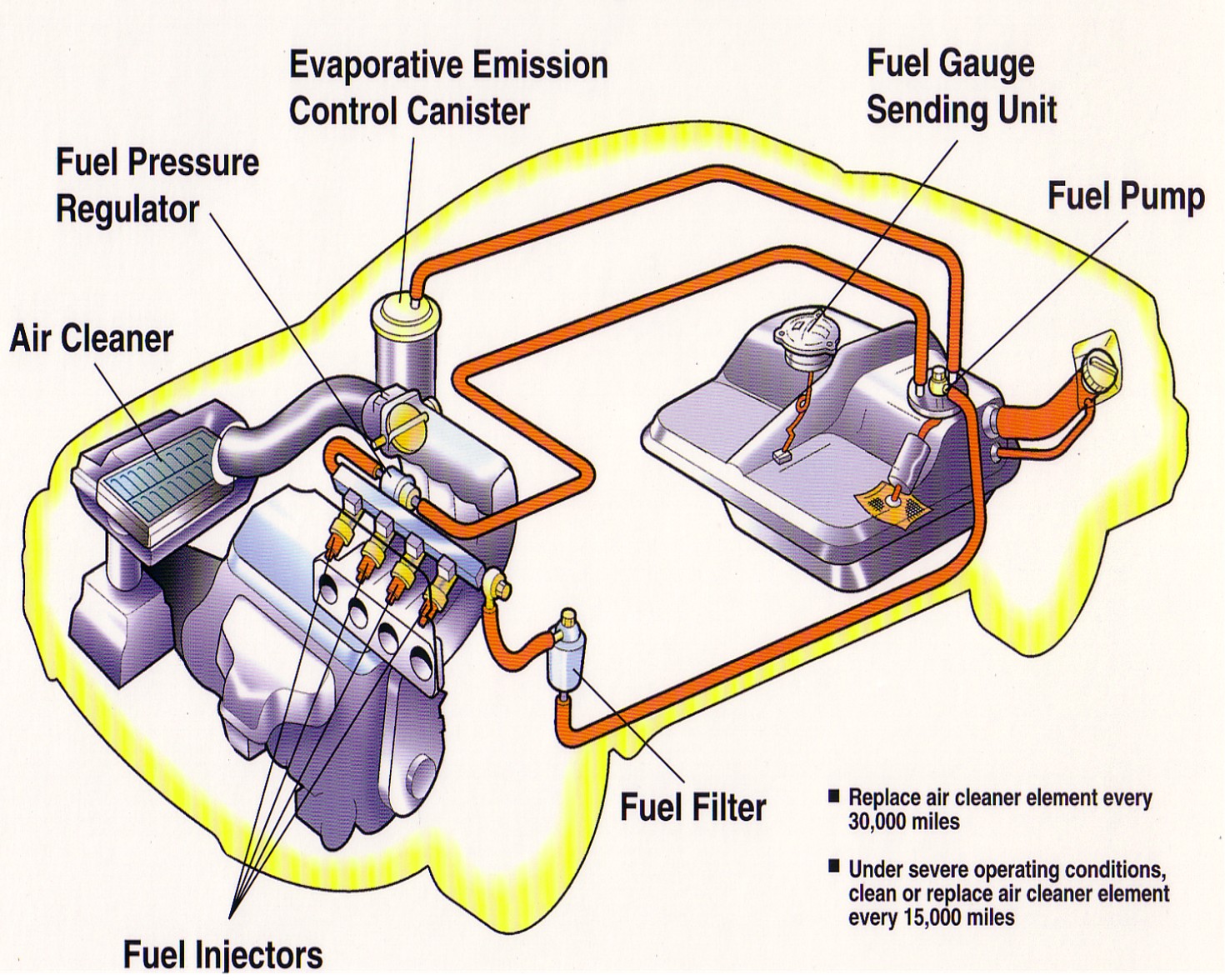Understanding Your Car's Fuel Delivery System
Ever wondered how your car gets the fuel from the tank to the engine? The answer lies in a small but mighty component: the fuel pump. This essential part plays a crucial role in delivering the precise amount of fuel needed for combustion, ensuring your engine runs smoothly and efficiently. Understanding how this system functions can empower you to maintain your vehicle and troubleshoot potential problems.
The fuel pump's operation is surprisingly intricate. It takes fuel from the tank and pushes it under pressure to the engine's fuel injectors or carburetor. This pressurized fuel is key to the combustion process, allowing your car to generate power and move. Without a functioning fuel pump, your car simply won't start.
Fuel pumps weren't always what they are today. Early vehicles relied on gravity to feed fuel to the engine. As engines became more powerful and fuel tanks were relocated away from the engine, mechanical pumps, driven by the engine, became necessary. Modern vehicles predominantly use electric fuel pumps located inside the fuel tank. This in-tank placement helps cool the pump and reduce the risk of vapor lock, a problem where fuel vaporizes and disrupts fuel flow, particularly in older vehicles with external pumps.
The importance of a properly functioning fuel pump cannot be overstated. It's the heart of your car's fuel delivery system. A malfunctioning pump can lead to a range of issues, from poor fuel economy and reduced performance to complete engine failure. Understanding the function of your fuel pump is crucial for proper vehicle maintenance.
Common problems associated with fuel pumps include whining noises from the tank, difficulty starting, sputtering at high speeds, and sudden loss of power. These symptoms can indicate a failing pump or other issues within the fuel system. Ignoring these signs can lead to more significant and costly repairs down the road.
Fuel pump operation provides several benefits. Consistent fuel delivery ensures optimal engine performance. The pressurized system allows for efficient fuel atomization and combustion, leading to better fuel economy. Modern in-tank pumps operate quietly and reduce the risk of vapor lock.
Maintaining your fuel pump involves keeping your fuel tank at least a quarter full to help cool and lubricate the pump, using quality fuel to prevent clogging, and replacing your fuel filter regularly. A clogged filter can strain the fuel pump, leading to premature failure.
Advantages and Disadvantages of In-Tank Fuel Pumps
| Advantages | Disadvantages |
|---|---|
| Cooling and lubrication from fuel | More complex replacement procedure |
| Reduced risk of vapor lock | Potential for fuel contamination to damage the pump |
| Quieter operation | Can be difficult to diagnose certain problems |
Best practices for maintaining the fuel system involve regular inspections, addressing leaks promptly, and avoiding running your vehicle on empty. These preventative measures can prolong the lifespan of your fuel pump and prevent costly repairs.
Frequently Asked Questions:
1. How often should I replace my fuel pump? - There's no set interval, but most last for many years. Replace if it fails.
2. How do I know if my fuel pump is bad? - Common signs include difficulty starting, sputtering, and loss of power.
3. Can I drive with a bad fuel pump? - Not recommended, as it can lead to engine damage.
4. Where is the fuel pump located? - Usually inside the fuel tank.
5. What causes a fuel pump to fail? - Clogs, overheating, and general wear and tear.
6. How much does it cost to replace a fuel pump? - Varies depending on the make and model of your car.
7. Can I replace a fuel pump myself? - It can be a challenging DIY project. Professional replacement is often recommended.
8. How can I prevent fuel pump problems? - Regular maintenance, quality fuel, and avoiding running on empty.
In conclusion, understanding how a car fuel pump works is essential for any car owner. This small component plays a vital role in keeping your car running smoothly. By understanding its function, common issues, and maintenance best practices, you can ensure optimal performance, fuel efficiency, and prevent costly repairs. Taking proactive steps to maintain your fuel system will ultimately contribute to a more reliable and enjoyable driving experience. Regularly inspect your fuel system, address any issues promptly, and prioritize preventative maintenance to keep your car on the road for years to come.
Experience south lake tahoe live your webcam guide
Eldoradogg legitimacy unpacked a deep dive
Bugs and not bugs a deep dive into the creepy crawly world and beyond














